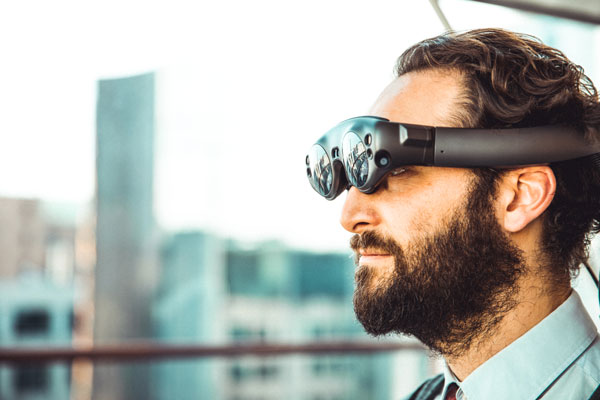Matthias Baur shares some insights from his MBB Consulting Group’s recent White Paper on using AI to enhance the customer journey.
 During the UFI Congress in St Petersburg, along with members of the UFI Digital Innovation Committee, I had the opportunity to impart a few ideas on the subject of tradeshow innovation.
During the UFI Congress in St Petersburg, along with members of the UFI Digital Innovation Committee, I had the opportunity to impart a few ideas on the subject of tradeshow innovation.
The topic triggered good discussion which inspired MBB-Consulting Group to release a White Paper on ways in which artificial intelligence (AI) can contribute to tradeshow innovation. I offer the following summary of extracts from that paper.
Innovative ideas born from the use of machine intelligence are seeping into the exhibition world where they are inspiring the evolution and transformation of exhibitions and how traditional business is conducted. AI seems to have rekindled our creative thinking towards customer centricity and how we can further influence the customer journey and overall experience.
Through the manipulation and implementation of digital tools, the appeal, effectiveness, productivity, interaction and return for participants, as well as organiser, has the potential to exceed current expectations.
The incorporation and use of digital tools to enhance the customer experience of tradeshows is not only elevating the quality of the events but also fostering the competitive edge of the consumer-supplier relationship, extending smarter, more creative ways for exhibitors to compete against a floor suffused with competitors often pitching for the same potential clients.
When considering current trends and proposed future inventions, specifically within the digital realm, a good majority are focused on customer service, customer experience, participant interaction and on how to maintain the competitive edge, so it is not difficult to imagine that digital innovation and AI can indeed complement the industry in which we work.
Of the many AI originations that are impressing the business world, there are a number from which we can extract ideas and adapt into the exhibition design. Here I will touch on a few that have piqued my interest and which have been unpacked in greater detail in the paper.
Interactive or electronic art
Electronic art is where those viewing the art become part of the product through interaction. Moving beyond appreciating art from a distance, interactive electronic art becomes more personal as the observer can walk in and around or sit and lie among the art.
Crystal
A personality detection technology that helps users improve their communication with other individuals by analysing publicly available data to create a personality profile that predicts behaviour, motivation and communication style. Over 75% of the Fortune 500 companies have used Crystal, which can help sales reps tailor communication to the personality of leads they do now know very well and build relationships based on insight into the lead’s personality.
Predictive shopping
Developed by companies such as Amazon and Facebook, predictive shopping is a service that, with the use of AI and algorithms from big data, dispatches a variety of consumables to the user before the recipient has even ordered them. From cleaning products to groceries, by determining the user’s online behaviour, AI predicts the anticipated needs and requirements and delivers what is believed to be required by the user with the intention that the recipient will accept the delivery, thereby generating sales.
WOW factor
One final innovation I want to mention, as it has really impressed me the most, is IBM’s World-of-Watson (WOW). Until Watson, people might have doubted that digital can provide results, but Watson is the proof that it is possible.
The primary objective of WOW was to attract a projected 50% of conference attendees to a private trade show, to generate sales leads and increase sponsorship revenue. The tactic used was to divide the trade show into individual zones showcasing examples of how genuine companies utilised Watson to cut costs, increase sales and/or improve products.
They employed augmented reality (AR) and multiple live examples in the zones to convey the overwhelming range of industries, from airlines to chocolatiers, that Watson has successfully helped. The individual zones at the trade show included various interactive areas and services such as: a 37.1sqm responsive-tile walkway, where body weight activated flash marketing messages; a driverless 3D-printed interactive Q&A minibus branded ‘Olli’; a cognitive dress embellished with 150 LED-connected fabric flowers which glowed in different colours when detecting a positive or negative comment in response to tweets received from the audience; and, last but not least, a chat room area, where attendees could converse with Watson in natural language on various topics.
The success of this trade show supported by AI features are in the results, where of the 20,000 visitors invited to attend the annual conference, 85% (i.e. 17,000) converted into attendees of which 90% visited the trade show (40% above target). The show generated 15,000 leads and contributed to 37% increase in sponsorship.
WOW is a solid case-study of where digital innovation can not only enhance the customer experience but increase the revenue potential for both exhibitors and organisers.
To read more about the World-of-Watson and other digital innovations that should inspire all tradeshow professionals, contact MBB-Consulting Group to receive a copy of the comprehensive White Paper:








